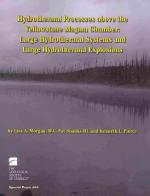|
This section contains 286 words (approx. 1 page at 300 words per page) |
A magma chamber is a reservoir of molten rock that is the source of lava in a volcanic eruption. Magma chambers are typically located a few kilometers below the surface. A magma chamber is created by a mantle plume, or upwelling of heat from the earth's mantle. This delivers heat and molten rock upwards to the base of the crust. Because magma is less dense than solid rock, it will rise through fractures. Dissolved gases under pressure also help to force the magma upwards. If the migrating magma can no longer find a path upwards, it may gather into a reservoir and form a magma chamber. Continual migration of more magma into the chamber will cause the pressure within the chamber to increase. At some point, the magma chamber may not be able to contain the pressure and the magma, and it may breech. The magma is then driven upward through a conduit such as a volcanic neck or fissure, resulting in the eruption of the volcano.
Sometimes, a magma chamber will experience a cessation in the influx of magma before it is able to release into a volcanic eruption. It this case, the magma may begin to cool and crystallize in place. As it does so, mineral crystals form and settle to the bottom while the remaining magma, depleted of the components that formed the initial minerals, pools at the top. Certain minerals will form first according to Bowen's reaction series, with crystallization becoming successively more silica rich. This process is known as fractional crystallization and results in a stratified igneous body, known as a layered intrusion. The Skaergaard intrusion in Greenland is a well known layered intrusion.
See Also
|
This section contains 286 words (approx. 1 page at 300 words per page) |


